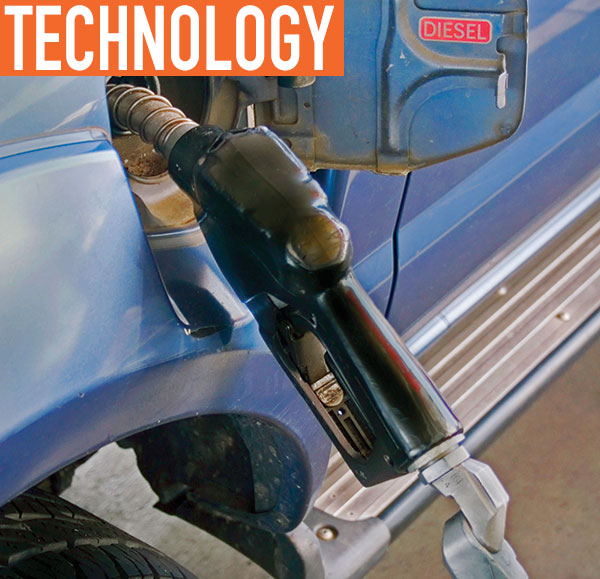In mid-January, diesel prices stood 47 cents higher per gallon than a year ago, according to the US Energy Information Administration. Regular unleaded increased almost as much. That puts pressure on fleet budgets, but for most fleet managers, smarter fuel management doesn’t start with today’s price hike and won’t go away with tomorrow’s dip.
Fuel costs are always top of mind for fleet management professionals, no matter the pump price. This is rooted in the dual reality that fuel prices are volatile—when they are low, we know they won’t stay low forever—and the “price of fuel” is not the same as the “cost of fueling”—total fuel costs extend far beyond the per-gallon price, and that is what must be managed.
FORECAST EXPENSES
The challenge for organizations is to accurately forecast their fuel expenses and to actively work to minimize them. By employing a combination of time-tested best practices and cutting edge new technology, substantial savings can happen, regardless of the pricing environment.
The tried-and-true best practices should sound familiar:
- Proper tire pressure: Every one psi drop in the pressure of your tires is going to lower gas mileage by 0.4 percent.
- Speed moderation: You can assume that each five mph you drive over 50 mph is like paying an additional $0.13 per gallon for gas.
- A robust fleet card program: You can only manage what you can measure, says the old business adage, and while that may not always be true—certainly some unmeasurable things can still be managed—measurement does make tracking progress easier. Fleet card programs provide the kind of visibility into your fuel and maintenance spending that enables optimum measurement.
- Negotiated discounts: Consolidating fuel purchases with truck stops and gas stations can bring considerable savings.
- Route optimization: Driving five miles out of route to save three cents per gallon probably doesn’t make sense when you factor in mileage, hourly driver pay, and overhead costs.
TECHNOLOGY FOR CONTROL
The difference in employing such practices today is that continued advances in technology are making them more precise, easier to measure, and simpler to encourage or enforce. For example, speed limiters work better than urging a driver to slow down, and dashboard monitors do a better job of alerting when tire pressure is not optimal so drivers can act promptly to rectify.
Similarly, the benefits of visibility are enhanced by a fleet card program that covers all sizes and vehicle types on a single card, such as the Voyager Fleet Card. Fleet managers can access expense information through a single portal, with a view across all vehicles and transactions. Better visibility leads to better coordination, less duplication, and enhanced efficiency.
Finally, recent upgrades to the Voyager Mobile App provide enhanced routing and price optimization. Fleet managers can map out the most efficient route for drivers and steer them to the lowest cost fueling options on the way. They can “flag” locations where proprietary discounts have been negotiated, making them easy for drivers to spot on a list of options. They can print out reports and maps for fleets that do not issue or allow drivers to use mobile devices.
With today’s emerging technologies, in which so many best practices can be automated and controlled with specific software applications, the savings to be achieved from following such practices can be considerably more than ever before. And, this can be the case regardless of the actual price of fuel today or tomorrow.
ABOUT THE AUTHOR
Ramel Lindsay is the manager of strategic partnerships and business development, U.S. Bank Voyager® Fleet Card. U.S. Bank Compliance Approval Number MMWR-106795 (1/17).
_______________________________________________________________________
MODERN WORKTRUCK SOLUTIONS: MARCH 2017 ISSUE
Did you enjoy this article?
Subscribe to the FREE Digital Edition of Modern WorkTruck Solutions magazine.
![]()




